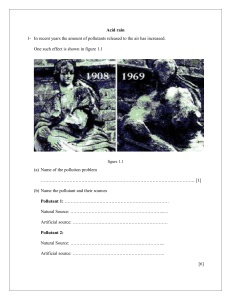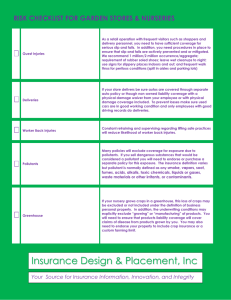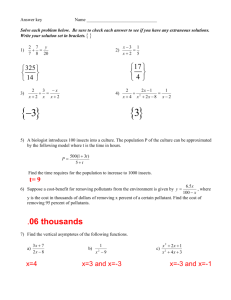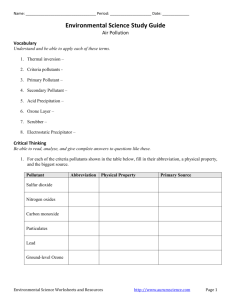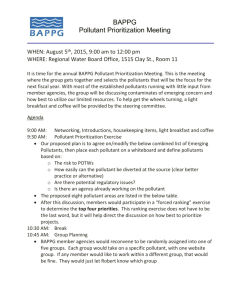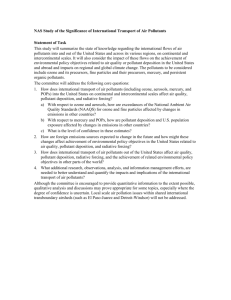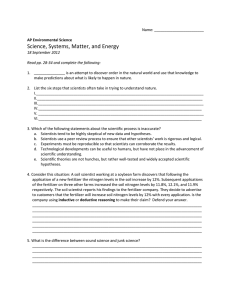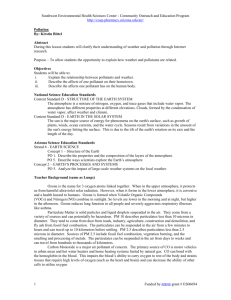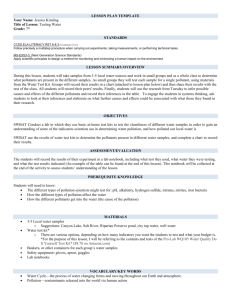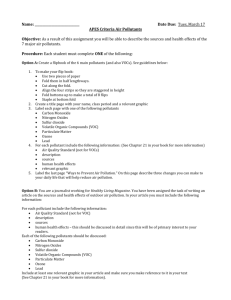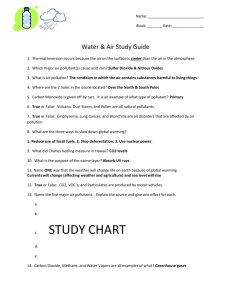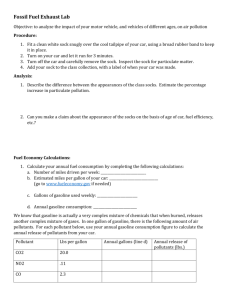Ch12 Qs Water Pollution
advertisement
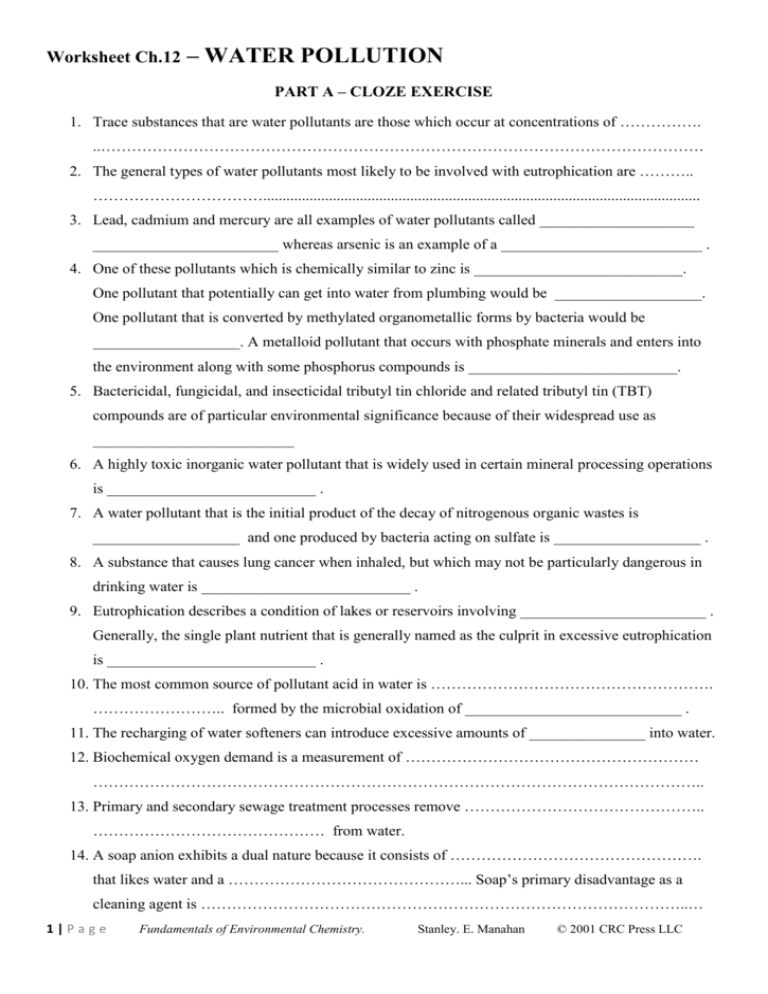
Worksheet Ch.12 – WATER POLLUTION PART A – CLOZE EXERCISE 1. Trace substances that are water pollutants are those which occur at concentrations of ……………. ..……………………………………………………………………………………………………… 2. The general types of water pollutants most likely to be involved with eutrophication are ……….. ……………………………................................................................................................................. 3. Lead, cadmium and mercury are all examples of water pollutants called ____________________ ________________________ whereas arsenic is an example of a __________________________ . 4. One of these pollutants which is chemically similar to zinc is ___________________________. One pollutant that potentially can get into water from plumbing would be ___________________. One pollutant that is converted by methylated organometallic forms by bacteria would be ___________________. A metalloid pollutant that occurs with phosphate minerals and enters into the environment along with some phosphorus compounds is ___________________________. 5. Bactericidal, fungicidal, and insecticidal tributyl tin chloride and related tributyl tin (TBT) compounds are of particular environmental significance because of their widespread use as __________________________ 6. A highly toxic inorganic water pollutant that is widely used in certain mineral processing operations is ___________________________ . 7. A water pollutant that is the initial product of the decay of nitrogenous organic wastes is ___________________ and one produced by bacteria acting on sulfate is ___________________ . 8. A substance that causes lung cancer when inhaled, but which may not be particularly dangerous in drinking water is ___________________________ . 9. Eutrophication describes a condition of lakes or reservoirs involving ________________________ . Generally, the single plant nutrient that is generally named as the culprit in excessive eutrophication is ___________________________ . 10. The most common source of pollutant acid in water is ………………………………………………. …………………….. formed by the microbial oxidation of ____________________________ . 11. The recharging of water softeners can introduce excessive amounts of _______________ into water. 12. Biochemical oxygen demand is a measurement of ………………………………………………… ……………………………………………………………………………………………………….. 13. Primary and secondary sewage treatment processes remove ……………………………………….. ……………………………………… from water. 14. A soap anion exhibits a dual nature because it consists of …………………………………………. that likes water and a ………………………………………... Soap’s primary disadvantage as a cleaning agent is …………………………………………………………………………………..… 1|Page Fundamentals of Environmental Chemistry. Stanley. E. Manahan © 2001 CRC Press LLC The surface active agent, or surfactant, in detergents acts by ………………………………………… ………………………………………………………………………………………………………… 15. The advantage of LAS surface active agent over ABS is that the former is _____________________. Most of the environmental problems that currently are associated with the use of detergents arise from the _____________________________________ in detergents. 16. A once common petrol additive that has been shown to pollute water is ____________________ . 17. Pesticides classified as “both the oldest and newest” kinds of pesticides are the _________________ and pyrethroids. Chemically, both parathion and malathion are classified as ____________________ but the latter is safer because ………………………………………………………………………….. 18. Although the toxicity of DDT to humans is low, it is environmentally damaging because of its …….. ………………………………………………………………………………………………………….. PART B – SHORT ANSWER 19. What do mercury and arsenic have in common in regard to their interactions with bacteria in sediments? 20. What are the two reasons that soap is environmentally less harmful than ABS surfactant used in detergents? 21. What is the primary detrimental effect upon organisms of salinity in water arising from dissolved NaCl and Na2SO4? 22. Give a specific example of each of the following general classes of water pollutants: (a) trace elements: (b) metal-organic combinations: (c) pesticides: 23. Draw the general chemical formula of the compound designated as PCB? 2|Page Fundamentals of Environmental Chemistry. Stanley. E. Manahan © 2001 CRC Press LLC
